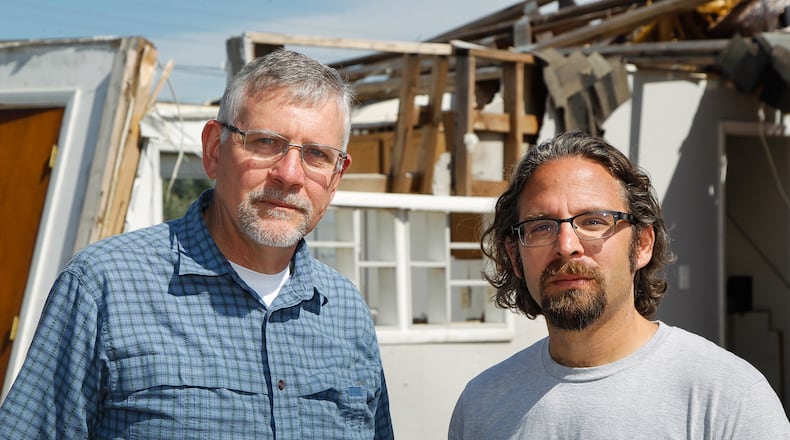Four months after the Memorial Day tornadoes, the Red Cross shelters are closed. FEMA assistance centers are gone. Volunteer efforts have tapered.
But survivors remain on the long road to recovery. The storms destroyed or significantly damaged 1,250 homes in Montgomery, Greene and Miami counties. Many of the thousands of people who lived in these houses remain displaced, traumatized, less than whole.
RELATED: First repair job by tornado recovery group is single mom’s home
Another 4,000 homes suffered less severe damage, and it’s unclear when many will be repaired. The future of entire communities remains uncertain.
For this reason, the Dayton Daily News is asking those affected by the storm to fill out a survey to assess the lasting effects of the tornadoes, and what survivors need for short-term and long-term recovery.
Find the survey on our website at DaytonDailyNews.com/tornadosurvey. Individuals needing assistance accessing or using the internet for this survey can get help at their closest Dayton Metro Library branch.
FILL OUT THE SURVEY HERE
The Dayton Daily News is sending reporters Chris Stewart and Josh Sweigart — joined at times by Storm Center 7 Chief Meteorologist McCall Vrydaghs — to travel the length of the largest tornado. It tore a path all the way across Montgomery County. They will gather people's stories and gauge recovery. Look for our findings in an upcoming Dayton Daily News.
FOLLOW DAYTON DAILY NEWS INVESTIGATES ON FACEBOOK FOR THE LATEST
Laura Mercer, director of the Miami Valley Long Term Recovery Operations group — a coalition of agencies working together to help survivors — said there is real danger in tornado survivors being forgotten as time drags on.
“Long-term recovery is exactly that, it’s long term,” she said.
The recovery group is hiring and training caseworkers to help people navigate available resources. People in need can access them by calling the United Way of Greater Dayton’s HelpLink line at 211.
About 110 people have come through the 211 phone line so far, “which is small fraction of the number of people who need to be calling in there,” Mercer said.
The Dayton Foundation has received about $1.7 million in donations for tornado relief so far. About $500,000 was spent supporting agencies providing emergency relief in the storm's immediate aftermath. Another $200,000 is helping fund caseworkers with Mercer's group.
Foundation President Mike Parks said an estimated 850 people need caseworker support, and will for a couple years. Then there’s the larger issue of helping communities recovery, which can take a decade. The remaining foundation funds will support these two efforts.
“As a community there’s going to be a continuing need for resources,” Parks said.
RELATED: Website to coordinate tornado victim info and how to donate, volunteer
In the immediate aftermath of the storm, pressing needs existed for food, water, clothing and housing, American Red Cross Program Manager Shannon O’Neill said. The Red Cross set up five emergency shelters.
The shelters closed after a couple of weeks. The needs have since evolved. The Red Cross assisted more than 1,200 households after the storm. Now they are transferring still-open cases to the long-term recovery group.
The ongoing needs include rental assistance, legal aide, help with home repairs and dealing with insurance companies, Mercer and O’Neill said. The list goes on.
“This is not something that’s going to go away,” Mercer said.


